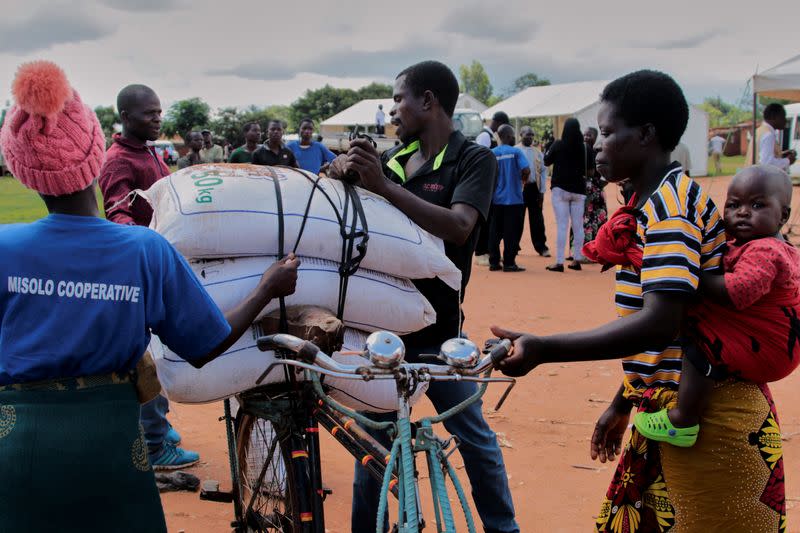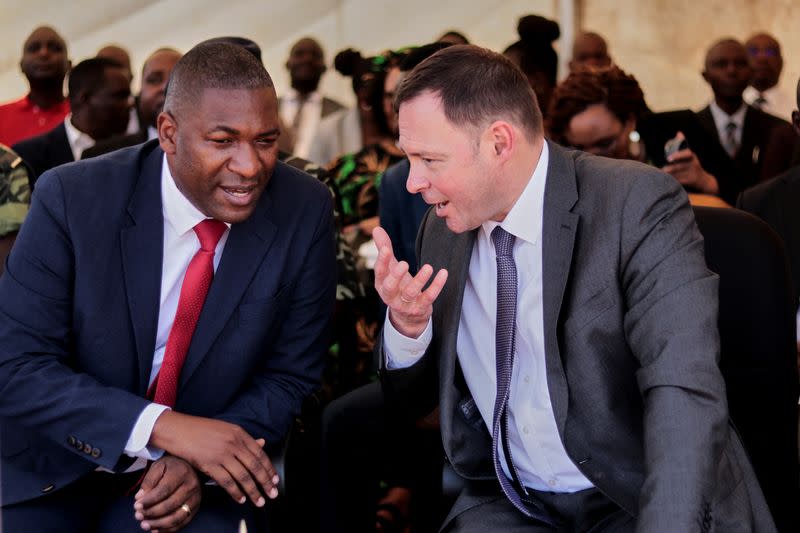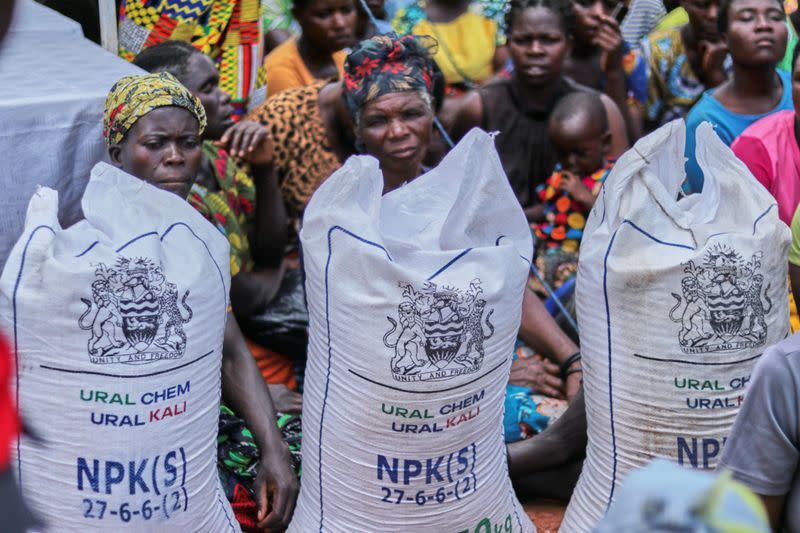African smallholder farmers count the cost of fertilizer price spike
By Nelson Banya, Nyasha Chingono and Frank Phiri
HARARE (Reuters) - Helplessly watching her maize turn yellow as she waited for free fertilizer from the government, Zimbabwean farmer Marian Kanenungo had nothing but makeshift compost from an anthill to help save her crop - and she had low hopes of that.
Kanenungo, a smallholder farmer in Mudzi, 230 km north-west of the capital Harare, is one of many who struggled to buy fertilizer during the 2022/23 planting season after prices spiked following Russia's invasion of Ukraine.
"If I buy fertilizer, it means my grandchildren will not go to school. I had to use anthill soil and compost as manure but, as you know, that will not yield much," said 50-year-old Kanenungo.
Sanctions on entities within major fertiliser exporter Russia after the invasion of Ukraine and a jump in the price of gas, key in the manufacture of nitrogen products, have pushed up prices of crop nutrients globally in the last year.
Fertilizer prices in Zimbabwe have risen by nearly 30% in that period, with a 50 kilogramme bag of basal fertilizer currently costing an average $45 and a bag of top dressing fertilizer about $60, Prince Kuipa, operations director the Zimbabwe Farmers Union, told Reuters.
The union, which represents most of the country's farmers, said high fertilizer prices could impact crop output despite favourable rains in the maize-growing region. "The number of (fertiliser) bags that farmers can buy has been badly affected," Kuipa said.
The Zimbabwean government has a long-running input support scheme to help with costs like fertilizer. It increased the number of smallholder farmers covered by the scheme by 25% to 2.89 million during the 2022/23 season, hoping to help more households cope with rising food inflation.
But with global prices high it has struggled to provide fertilizer to farmers, leaving many smallholders facing a poor harvest.
These include Emilia David, a 27-year-old mother of three. "To save my crops, I had to apply decomposing tree leaves. I know this is old fashioned, but there is nothing I can do. My children need to eat," she said.
FOOD INSECURITY
The Food and Agriculture Organisation has named Zimbabwe, Malawi and Angola as countries in the southern African region facing food insecurity due to reduced fertilizer use.
In Malawi, maize output is seen falling 4% this year, after the government's Affordable Inputs Programme (AIP) struggled to keep up with price increases, agriculture minister Sam Kawale said.
Fertilizer prices in Malawi have more than doubled in the past year, with a 50 kg bag retailing at 75,000 kwacha ($72.71), putting pressure on the government's 109 billion kwacha budget for the input support programme.
"The cost of the programme (AIP) almost tripled," Kawale said while receiving a 20,000 tonne consignment of fertilizer donated by Russia's Uralchem-Uralkali on March 6.
Malawi was one of the first African countries to receive the donated fertilizer through the World Food Programme, part of 260,000 tonnes of the Russian firm's fertilizer stuck in several European ports.
But for Zione Maulidi, a 45-year-old Malawian smallholder farmer who received some of the donated Russian fertilizer, help came too late.
"This fertilizer we have received will not help us," said Maulidi, surveying her stunted crop. "The period for applying it is over and the maize crop has failed."
($1 = 1,039.5000 kwacha)
(Reporting by Nelson Banya in Harare, Nyasha Chingono in Mudzi and Frank Phiri in Lilongwe; Editing by Olivia Kumwenda-Mtambo and Jan Harvey)




